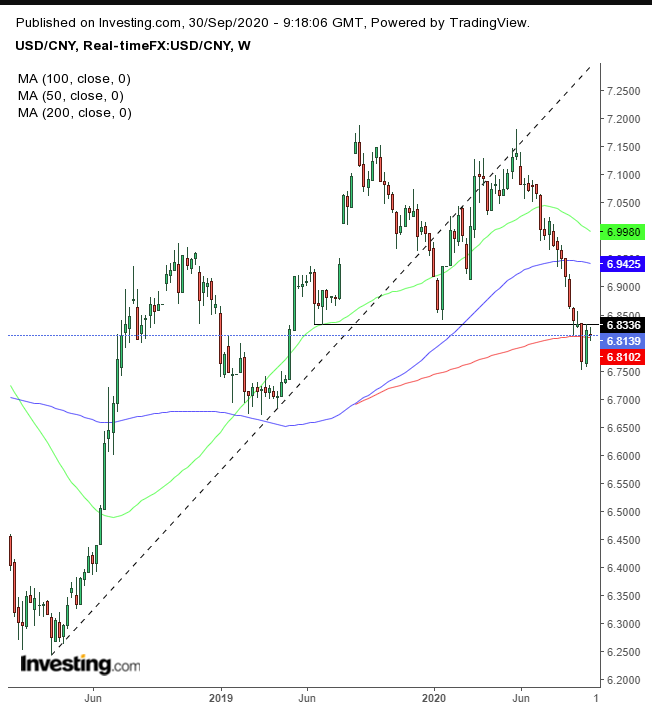The ongoing saber-rattling on such prominent issues as trade and technology between the world’s two economic titans, the US and China, has overshadowed quiet moves in the currency market for the USD/CNY pair. Indeed, recently traders have boosted the yuan to its best quarter since 2008.
Earlier today, the Chinese currency extended its gains after positive, Sino manufacturing data was released. Both government and private surveys show improving exports, crucial for China’s economic recovery from the coronavirus outbreak.
The Asian nation's economic recovery is also attracting foreign investors, increasing demand for the yuan, with which investors purchase Chinese assets. Since June, the yuan has added 3.6%.
As well, China’s 10-year sovereign bonds yield 3.157%, making it far more attractive than the equivalent Treasury benchmark which currently yields 0.648%. Chinese stocks are also attractive amid a US equity selloff ahead of US elections in November that pose an extraordinary level of uncertainty, including the risk of a disorderly transfer of power if President Donald Trump loses.
With that in mind, now may be a good opportunity to buy the yuan, especially for the long-term, particularly based on the principles of technical analysis.

Two weeks ago, the USD/CNY completed a massive double top. It's now struggling to clear the 200 Weekly MA, which is the last hope for bulls.
The price jumped back to the neckline where it found resistance, for the second week, increasing the chances of a completed return move.
Trading Strategy – Short Position
Conservative traders would wait for a close below the month’s lows to increase the odds of a completed return-move, not to be sucked into a whipsaw or even a bear trap.
Moderate traders may be content with a close below the 200 DMA.
Aggressive traders may short now, considering they understand and accept the risk, employing a clear trade plan to which they commit, for example:
Trade Sample
- Entry: 6.8150
- Stop-Loss: 6.8400
- Risk: 250 pips
- Target: 6.7150
- Reward: 1,000 pips
- Risk:Reward Ratio:1:4
